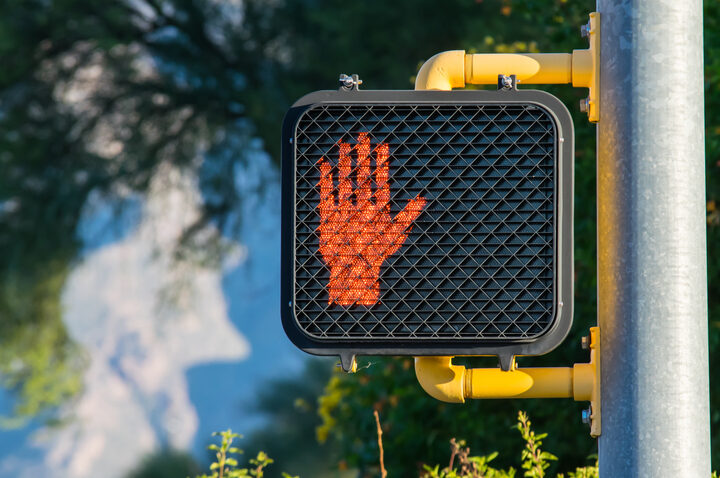Head-On Collision

In 2020, head-on collisions caused 228,000 injuries. Although that’s only 6.2% of crashes involving other motor vehicles, that’s still thousands of injuries each year.
Whether you’ve recently been the victim of a head-on collision, you know someone who was hurt, or you’re merely curious, there are many types of injuries that this type of crash can cause. Some are only temporary, while others can last for months or years.
Here are some of the most common types you need to know and what to do after a head-on collision.
Whiplash
Whiplash, also called neck strain or a neck sprain, is a type of soft tissue injury that can occur in vehicle collisions. Although most people associate whiplash with rear-end collisions, victims can also sustain them in other types of crashes. It’s caused by sudden extension and flexion, which is common in auto accidents.
People suffering from whiplash may experience the following:
- Neck pain
- Neck stiffness
- Dizziness
- Headache
- Prickling or burning sensations
- Back and shoulder pain
- Fatigue
- Nervousness or irritability
- Difficulty sleeping
In severe cases, people may experience memory loss or difficulty concentrating. Treatment includes the prescription of pain medications and a cervical collar. However, patients may also need to undergo physical therapy.
Most people recover from whiplash after a few days or weeks. That said, some patients may deal with side effects, such as headaches and chronic pain, for months.
Traumatic Brain Injury (TBI)
A traumatic brain injury can cause long-term effects and even alter a person’s quality of life following a head-on collision. TBIs may not show up immediately on CT scans or X-rays. Symptoms may not appear until hours or even days following a crash, which is why it’s so crucial to see a doctor and watch your symptoms.
Even if you’re initially cleared, symptoms may only appear days after the crash. Make sure to go to your doctor if you experience any of the symptoms of a TBI, including:
- Headache
- Fatigue or drowsiness
- Speech problems
- Nausea or vomiting
- Loss of balance or dizziness
- Light or sound sensitivity
- Sensory issues
- Mood swings
- Changes in sleeping patterns
- Feeling anxious or depressed
- Losing consciousness for seconds or minutes
- Feeling disoriented or confused
- Difficulty concentrating
TBIs may be either moderate or severe. Seek immediate medical attention if you experience the following:
- Headaches that persist or get worse
- Convulsions or seizures
- Dilated pupils
- Loss of consciousness for minutes or hours
- Repeating nausea or vomiting
- Fluids from the nose or ears
- Inability to wake up
- Numbness or weakness in toes and fingers
- Lack of coordination
Blunt Force Trauma
A head-on collision often results in drivers and passengers being slammed against the inside of the vehicle, such as the windows, steering column, dashboard, etc. This sudden and forceful impact can cause several types of injuries, including internal bleeding and damage to internal organs, broken bones, and other blunt-force injuries.
Seatbelts and airbags help protect drivers and passengers, but even with adequate safety equipment, car accident victims can sustain blunt-force injuries.
Other common injuries from striking the inside of the vehicle or other objects inside the car include lacerations and bruises.
Damage to the Back and Spinal Cord
Any type of vehicle collision can result in damage to the back and spinal cord, especially a head-on crash. This type of collision can result in damage to the discs and nerves in the spinal column as well as the back muscles.
Damage to the back and spine can cause mobility issues and chronic pain that may result in disability and a lower quality of life. Severe spinal cord trauma can cause paralysis below the injury site. As such, these types of injuries are often devastating and life-changing for both the victim and their families.
Victims suffering from severe back and spine problems may no longer be able to work or enjoy the quality of life they had before. They may be limited in the activities they can perform, even day-to-day activities such as getting dressed or preparing meals.
Seeking the advice of a head-on collision lawyer is the best course of action after an accident, as they’ll be able to tell you what to do, which medical professionals to see, and what evidence you need to support your case. Car accident victims can get compensation for their injuries, including medical bills, lost wages, and pain and suffering.
Spinal cord injuries can result in the following symptoms:
- Loss of movement
- Uncontrolled bowel or bladder functioning
- Inability to feel heat, cold, or touch
- Altered sexual function
- Stinging or pain
- Coughing
- Difficulty breathing
- Clearing secretions from your lungs
- Extreme pressure or pain in your back, head, or neck
- Tingling or loss of sensation in your hands and feet
- Impaired breathing
- Difficulty walking and maintaining balance
- Twisted neck or back
- Weakness, lack of coordination, or paralysis in a part of your body
Fractures or Broken Bones
Individuals involved in vehicle collisions often sustain broken bones. The excessive force exerted on a body in a head-on collision can result in a fracture, which means the bone has been broken or shattered.
Fractures refer to any situation in which a bone loses its integrity. It may be a hairline crack, or the bone may split into different pieces. The severity of the injury affects the healing timeline, the cost of medical bills, and how long someone may miss work.
In any case, fractures are quite painful and can impact a person’s ability to perform day-to-day tasks. An untreated fracture can even cause nerve or muscle damage.
Burn Injuries
Another common injury victims can sustain in a vehicle collision include burns. Crashes can cause flammable liquids to leak and catch fire. Victims may sustain thermal or chemical burns, especially if they’re trapped inside a burning car.
Burn injuries can vary from mild to severe. In severe cases, people may need repeated skin grafts. Burn accident patients are also more prone to infections, scarring, psychological trauma, and more.
They may have severe scarring that affects their self-confidence. Disfiguring scars can cause mental and physical distress and depression.
Recovering Compensation After a Head-On Collision
To recover compensation after a head-on collision, you and your lawyer must prove liability to help strengthen your case. It’s crucial to receive medical attention following an accident, even if you feel fine. Some symptoms do not immediately show up. A medical examination and diagnosis serve as evidence.
Document injuries with photographs and keep records of your medical bills and prescriptions. Also, ensure you get a copy of the police report. Much of the evidence collected is time-sensitive, so you want to hire an attorney as soon as possible to gather evidence, such as eyewitness statements.
The Painful Effects of Head-On Collisions
A head-on collision can have devastating consequences, resulting in life-altering injuries. If you or someone you know was the victim of a head-on vehicle accident, you don’t have to suffer in silence.
Here at Sierra Accident Lawyers, we represent the victims of auto-related accidents. You deserve compensation, and it all starts with a case evaluation. Contact us to get started today.


